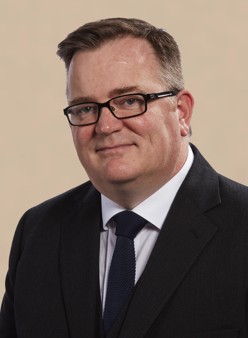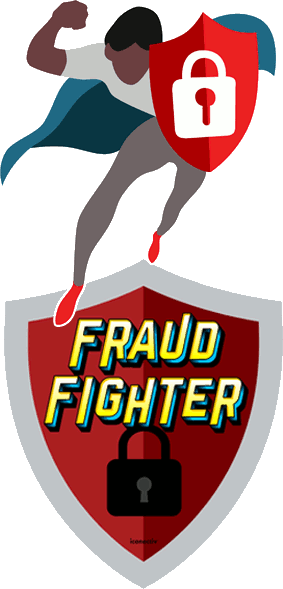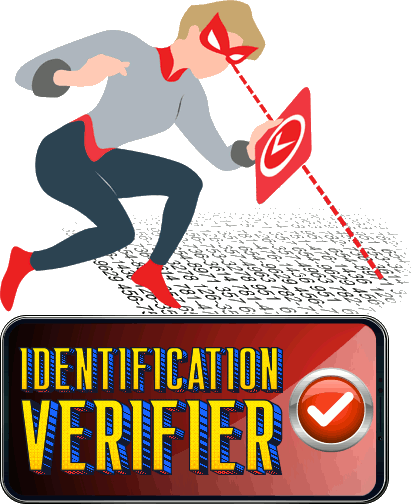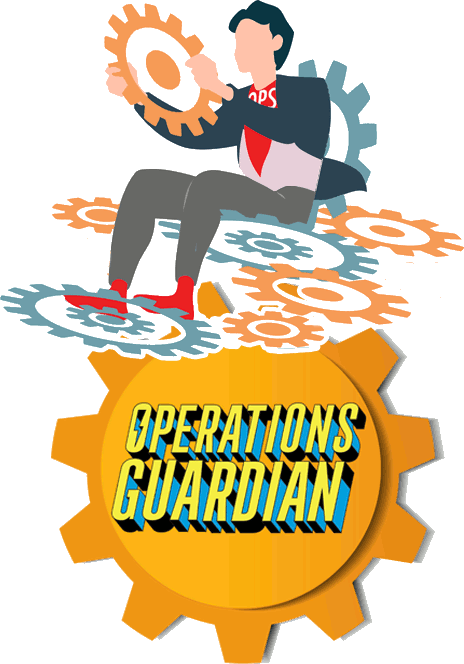| © 2022 Black Swan Telecom Journal | • | protecting and growing a robust communications business | • a service of | |
| Email a colleague |
August 2022
Well done, Fraud Fighter. I Now Promote You to Superhero of Trusted Communications

Exactly how do you explain your telecom fraud fighter job to someone at a cocktail party?
That’s a tough task! The trouble is it may take time to explain the context — describe how telecom services are delivered and paid for, then show how criminals steal money by corrupting the process.
A faster path is to use an analogy and say, “My job is to be a kind of detective of crimes committed against telecom providers.”
That analogy works, but iconectiv has come up with an even better one. Why be a mere “detective” when you can position yourself as a Superhero of trusted communications. Now that’s an attention getter: a very cool job title that can make you the life of the party :- )
All kidding aside, iconectiv’s new Superhero campaign is an effective way to raise awareness of several inter-related professions that protect digital engagement for telecoms, enterprises, and the public sector.
Here to discuss it with us is iconectiv’s Peter Ford, the Executive Vice President, Head of Information Solutions business for iconectiv.
| Dan Baker, Editor, Black Swan Telecom Journal: Peter, I got the Superheroes press release shortly after seeing the new Tom Cruise flick, Maverick, a movie about a 60-year old fighter pilot who helps save the world. Nice timing. What was the main motivation for this campaign? |

Peter Ford: Well, Dan, I think the key spark was that people who specialize in trusted communications are not given enough credit.
We forget there are thousands of people working in the industry, service providers, government agencies, enterprises, and organizations like iconectiv and others whose job it is to keep us secure.
Also, there is a lot of negative chatter about telecom: such as people losing confidence in the calls and texts they receive as spam, phishing and other deceitful tactics moved from email to the phone.
But when breaches in telecom security or control occur, we need to put these failures in perspective.
Take telecom traffic fraud. Industry estimates say telecom service providers lose $29 billion a year to fraud. But how much fraud was actually prevented?

The successful fraud hits are a mere fraction of the total attempts. But we never hear success stories of how service providers defended themselves and their customers from many billions of dollars of attempted fraud.
Likewise, people work very hard to defend against these attacks. Yet as quickly as service providers put up new defenses, the fraudsters invent new ways to bypass them.
So this Superheroes campaign is about recognizing employees throughout the industry who work every day to protect the integrity of the communications infrastructure — which is really the lifeblood of our lives and our economy.
| Besides fraud, we’re also fighting other cancerous abuses of the telecom network. Robocalling and SMS phishing (or smishing), for instance, don‘t steal money from service providers directly, but they do defraud consumers and erode trust in voice and texting — all of which can impact the future of communications. |

Dan, as you know, identity protection is an area where iconectiv has been highly focused in the last few years. For example, iconectiv is the U.S. market’s Secure Telephone Identity Policy Administrator (STI-PA) for the nation’s Calling Number Verification Service. That program, which is based on the STIR/SHAKEN framework, verifies the calling party’s telephone number. With many calls originating outside of the U.S. we believe there is a need for a similar service for international service providers also.
We are also the underpinning solution partner with CTIA for Registered Caller, a method that enables what we call branded calling. It’s all about verifying telephone call sources so consumers feel comfortable answering calls. The program is multi-faceted:
- STIR/SHAKEN Attestation gives the consumer an “A,” “B,”
or “C” attestation indicating the level of trust in ownership of
the telephone number of the incoming call. There are intricacies, however,
such as Virtual Network Operators or when an individual calling number may be
masked (such as calls from a call center) and the solution has to be smart enough
to enable these calls to be properly attested.
- Branded Logos — One can only imagine how many billions large businesses
have spent to get consumers to recognize and trust their brands and logos.
So presenting a secure logo to the called party is another invaluable verification
aid; and,
- Understanding the Call’s Purpose — Not every call from an
enterprise or a public sector body is of the same importance. Even if
the calling party is my bank, I may pay more attention if the call is about
potential fraud on my account vs. selling me a new product.
| So far we’ve discussed the Superhero’s role in the telecom industry, but the scope of trusted communications today also extends deep into industry and enterprise spheres. What’s happening there? |
Well, you’ll recall during the early stages of the COVID-19 pandemic that there was a massive shift to online work and communications because people were confined to home offices and not mixing with other people like they did before.
The upshot is that the need for greater public safety accelerated digital engagement — the online ways enterprises interact with customers and governments interact with citizens.
Post-pandemic that digital customer engagement is not just an add-on to an enterprise’s core business model. Digital customer engagement IS the new business model.
Now, what the Trusted Communications Superheroes do — understand and verify identity — is critical to digital engagement. Frankly, we’re still far behind in on-line security/fraud and privacy issues because we can‘t yet interact with customers online as richly and quickly, say, as we do buying food at a grocery store or visiting a doctor’s office for surgery.

Certainly, the less glamorous side of being a Superhero is ensuring efficient operations in support of service providers, business, and government. For instance, estimates are that 20% of service provider CapEx is wasted each year. So the better management of network expenditures is the role of the operations guardians.
As we move to a more interconnected world, we need new sets of assets and better ways of operating them. Many organizations never had such assets and those who have them know they need to greatly scale up those assets to deliver the fast, information-rich transactions the market increasingly demands.
And while driving all that efficiency is key, if you can‘t do that profitably and reliably then the value of that efficiency is greatly diminished.
Now to make a shameless plug: our company’s name, iconectiv, is central to what the next generation of digital society is all about — interconnectivity. Today we’re seeing exponential growth in both the number of connections and the complexity of those connections.
Consider for a moment how quickly we have moved to an ‘omnichannel’ model — where customers interact with enterprises in stores, online, via a telephone call, via SMS or in an application on their smartphone. The customer expects total consistency, transparency and trust across all of these interactions.
So you begin to see how interwoven and flexible these connections need to be for even the simplest of transactions to work properly.
| Government and public sector organizations also see great value in trusted communications. In that group, I include all the first responders who guard the public’s safety: police, emergency medical, disaster recovery, and firefighter teams. |
To be transparent, Dan, our work in the U.S. and U.K. today is being driven as much by government and regulator policy as it is by the industry players themselves. Robocalling and fighting smishing are especially big issues for government organizations.

iconectiv TruOps Common Language® is gaining traction, too. Common language is an iconectiv fixed asset management and data information system that telecoms use to identify, name, and locate their network assets. Customers outside the U.S. use Common Language to help them manage their network inventory and management tools. Those networks are far more complex than they were in the past.
This includes: tracking network assets by location and knowing where all the spares are located. That’s a huge driver of costs for service providers both in optimizing their spares inventory and quickly getting spares to places when there’s a network outage or other issue. It also helps with financial compliance and gives procurement teams value information to increase their purchasing power.
I agree, Dan, communication networks are absolutely crucial to first responder organizations who bring aid and information to people impacted by emergencies, extreme weather events, and disasters.
In fact, we are now using Common Language to enable a U.S. government agency to visualize network locations on a map. By overlaying Common Language data over maps of weather events, they can quickly understand and perhaps predict what the impact of a tornado, flood or other extreme event could be in a particular area and then make necessary adjustments to significantly minimize any potential network or service impacts for their customers.
That way the agency is better prepared for the aftermath and the action required when the weather event is past.
| Thanks, Peter. The Superheroes theme wraps a neat bow around “trusted communications.” Sure, there are enormous challenges, but also great opportunities exist for dedicated warriors to serve and entrepreneurial firms to deliver fresh innovation. |
Dan, the great thing from our view is the core issues to be solved are needed in every type of organization and in every corner of the globe. Every player in the digital ecosystem needs help from the Trusted Communications Superheroes and there are legions of them already working hard everywhere, every day for every one of us.

And the roles are all super-entwined. I like to think of them as a band of Superheroes.
The starting point is often to first verify identity. And that plays a key role in fighting fraud. And fighting fraud is at some level about protecting assets deployed. And all the assets need to be operated efficiently — at a reasonable cost.
We’d love to help build a community of these Superheroes. We think there’s an opportunity to start a conversation around some of the things these superheroes face in different industries, where the key goals are pretty much the same.
* * * *
NOTE: iconectiv has posted a form to download your own Superhero Identity Kit. The kit features a “virtual background and other trusted communications digital assets-so you can display your superpower for all to see”.
Copyright 2022 Black Swan Telecom Journal
Black Swan Solution Guides & Papers
- Expanding the Scope of Revenue Assurance Beyond Switch-to-Bill’s Vision — Araxxe — How Araxxe’s end-to-end revenue assurance complements switch-to-bill RA through telescope RA (external and partner data) and microscope RA (high-definition analysis of complex services like bundling and digital services).
- Lanck Telecom FMS: Voice Fraud Management as a Network Service on Demand — Lanck Telecom — A Guide to a new and unique on-demand network service enabling fraud-risky international voice traffic to be monitored (and either alerted or blocked) as that traffic is routed through a wholesaler on its way to its final destinations.
- SHAKEN / STIR Calling Number Verification & Fraud Alerting — iconectiv — SHAKEN/STIR is the telecom industry’s first step toward reviving trust in business telephony — and has recently launched in the U.S. market. This Solution Guide features commentary from technology leaders at iconetiv, a firm heavily involved in the development of SHAKEN.
- Getting Accurate, Up-to-the-Minute Phone Number Porting History & Carrier-of-Record Data to Verify Identity & Mitigate Account Takeovers — iconectiv — Learn about a recently approved risk intelligence service to receive authoritative and real-time notices of numbers being ported and changes to the carrier-of-record for specific telephone numbers.
- The Value of an Authoritative Database of Global Telephone Numbers — iconectiv — Learn about an authoritative database of allocated numbers and special number ranges in every country of the world. The expert explains how this database adds value to any FMS or fraud analyst team.
- The IPRN Database and its Use in IRSF & Wangiri Fraud Control — Yates Fraud Consulting — The IPRN Database is a powerful new tool for helping control IRSF and Wangiri frauds. The pioneer of the category explains the value and use of the IPRN Database in this 14-page Black Swan Solution Guide.
- A Real-Time Cloud Service to Protect the Enterprise PBX from IRSF Fraud — Oculeus — Learn how a new cloud-based solution developed by Oculeus, any enterprise can protect its PBX from IRSF fraud for as little as $5 a month.
- How Regulators can Lead the Fight Against International Bypass Fraud — LATRO Services — As a regulator in a country infected by SIM box fraud, what can you do to improve the situation? A white paper explains the steps you can and should you take — at the national government level — to better protect your country’s tax revenue, quality of communications, and national infrastructure.
- Telecom Identity Fraud 2020: A 36-Expert Analysis Report from TRI — TRI — TRI releases a new research report on telecom identity fraud and security. Black Swan readers can download a free Executive Summary of the Report.
- The 2021 State of Communications-Related Fraud, Identity Theft & Consumer Protection in the USA — iconectiv — This 49-page free Report on communications-related fraud analyzes the FTC’s annual Sentinel consumer fraud statistics and provides a sweeping view of trends and problem areas. It also gives a cross-industry view of the practices and systems that enable fraud control, identity verification, and security in our “zero trust” digital world.

